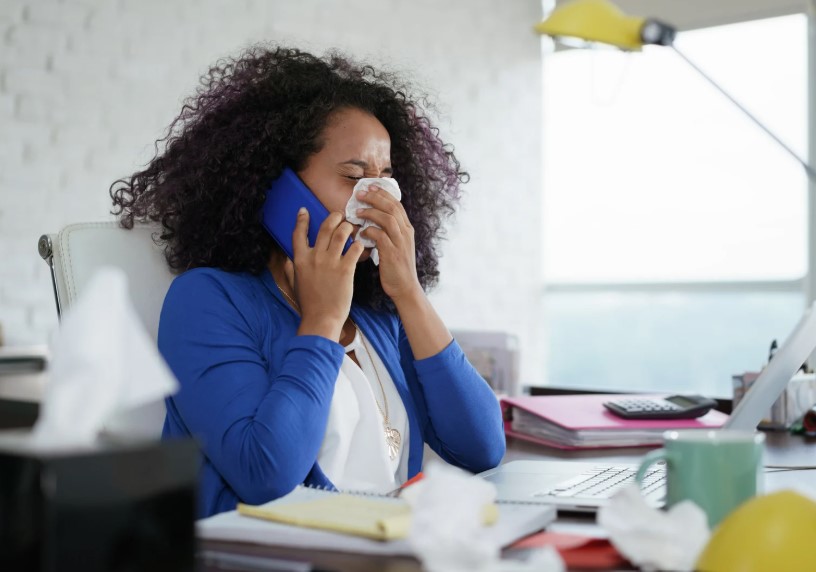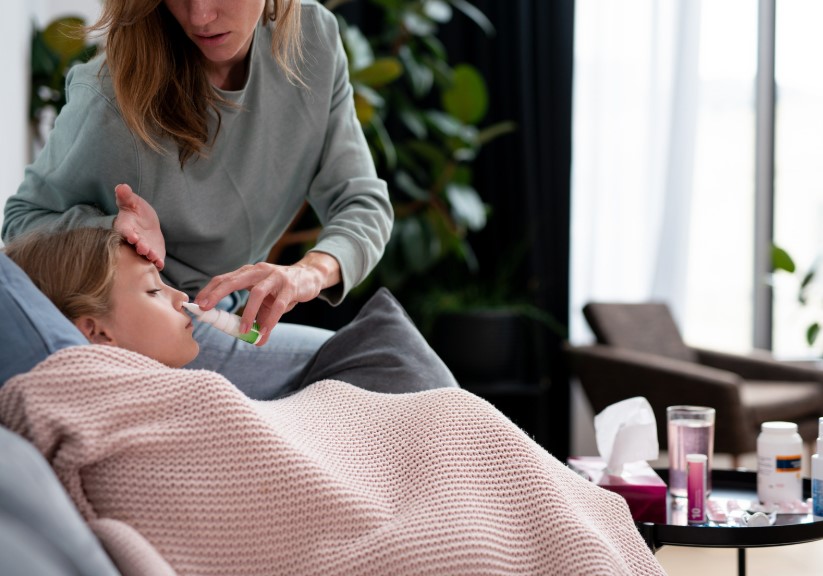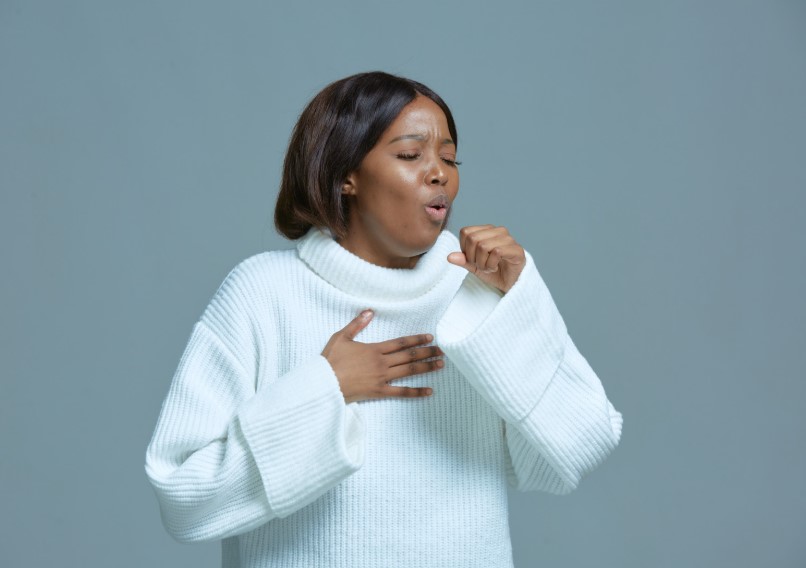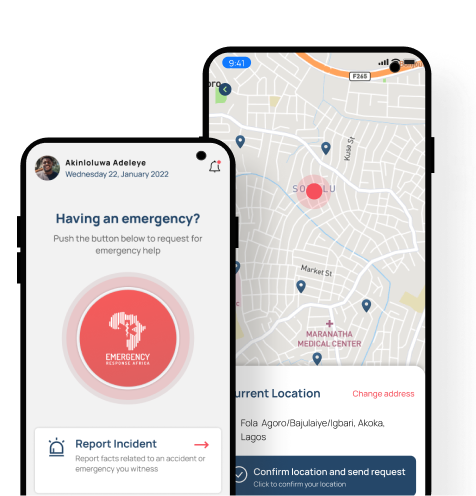Coughing, sneezing, and catarrh are some of the most common symptoms people experience, especially during cold weather or allergy seasons. While they may seem minor, these symptoms can be uncomfortable, distracting, and even contagious. In many cases, they’re early signs of viral infections like the common cold or flu, but they can also result from dust, pollution, or allergies.
At Emergency Response Africa (ERA), we know that small symptoms can quickly escalate if not managed early. You don’t have to wait until things get worse before taking action. Knowing how to provide basic first aid brings relief and helps stop the spread of illness to others.
In this guide, we’ll walk you through practical steps to manage cough, sneeze, and catarrh safely and hygienically.
What Causes Coughing, Sneezing, and Catarrh?
Coughing, sneezing, and catarrh are some of the body’s first lines of defense when the respiratory system is irritated or affected. Though they may seem like simple inconveniences, they often signal underlying processes at work, from viral infections to allergic reactions or environmental exposure.
Each symptom is distinct, but they are closely related in how they protect the airways and signal trouble inside the body. Let’s look at each more closely.
Coughing

Coughing is a powerful, voluntary or involuntary reflex aimed at clearing the throat, airways, or lungs of mucus, irritants, or pathogens. In many cases, it’s one of the body’s key ways of keeping the lungs clean and ensuring we breathe easily.
Common Causes of Coughing
- Viral Infections: Respiratory viruses like influenza, COVID-19, and the common cold cause most short-term (acute) coughs.
- Post-Nasal Drip: Mucus dripping from inflamed sinuses into the throat can cause a persistent, tickling cough.
- Asthma: Coughing, especially a dry, night-time cough, can be an early sign of asthma, where airways become hypersensitive.
- Acid Reflux (GERD): When stomach acid flows backward into the throat, it can irritate the airways and cause chronic coughing even without heartburn symptoms.
- Environmental Irritants: Smoke, pollution, or strong chemicals trigger coughing to expel harmful particles.
Sneezing

Where coughing clears the lower airways, sneezing is the body’s rapid-fire method of clearing irritants from the upper airways, mainly the nose and sinuses. It’s typically triggered by a sudden irritation of the nasal lining.
Common Causes of Sneezing
- Allergies: Pollen, dust mites, mold, or pet hair can trigger sneezing, especially in people with allergic rhinitis. Globally, about 10–30% of the population suffers from some form of allergy
- Viral Infections: Just like with coughing, colds and other viruses can inflame the nose and cause sneezing
- Environmental Irritants: Strong smells, pollution, and cold air can set off a sneezing spell
- Light Sensitivity (Photic Sneeze Reflex): Up to 35% of people sneeze when suddenly exposed to bright sunlight, a harmless inherited trait.
Both coughing and sneezing share a common purpose: to eject threats before they invade deeper tissues. But when this defensive activity becomes chronic, it can also lead to excessive mucus production — setting the stage for catarrh.
Catarrh

Catarrh is the build-up of thick mucus in the nose, throat, or chest. While coughing and sneezing happen quickly to remove irritants, catarrh tends to linger and can feel more uncomfortable over time.
Common Causes of Catarrh
- Infections: After the body fights off a virus, mucus production can persist, leaving a heavy feeling in the throat or nose
- Allergies: Chronic exposure to allergens can keep your airways inflamed and full of mucus
- Sinusitis: When the sinuses are inflamed, mucus can become trapped, causing pressure, post-nasal drip, and congestion
- Environmental Factors: Long-term contact with air pollution or chemicals (especially in workplaces) can also lead to chronic catarrh.
First Aid for Coughing
Coughing can be uncomfortable and sometimes alarming, both for the person experiencing it and those nearby. While most coughs are mild and manageable at home, some cases could signal a deeper problem that requires urgent medical attention. Here are the first steps to take to bring comfort and prevent complications:
- Stay Calm and Help Them Sit Upright: If someone starts coughing suddenly, guide them to sit upright. Sitting up makes breathing easier and helps the lungs work better. Avoid laying them down, which can worsen the coughing
- Offer Warm Fluids: Give small sips of warm water, tea, or clear soup. Warm liquids soothe the throat and loosen mucus, making the cough less painful
- Avoid Forceful Cough Suppressants: Use cough syrups only if recommended by a pharmacist or doctor
- Try Simple Soothing Home Remedies such as –
-
- Honey: Give one teaspoon of honey to children over one year or adults to calm the throat and reduce coughing
- Ginger tea: Fresh ginger boiled in water can ease throat irritation and reduce coughing fits
- Steam inhalation: Breathing in steam from a bowl of hot water (with a towel over the head) can help clear congested airways
- Saltwater gargle: Gargling with warm salt water soothes throat tissues and reduces inflammation
-
- Watch for Red Flags: Seek emergency help immediately if the coughing is:
-
-
-
- Accompanied by chest pain, wheezing, or difficulty breathing
- Severe and sudden, especially after eating (could signal choking)
- Bringing up blood
- Lasting longer than two weeks without improvement.
-
-
“If symptoms are severe or you’re unsure what to do, call Emergency Response Africa’s 24/7 helpline for immediate guidance or to request emergency care.”
First Aid for Sneezing
Frequent sneezing can be frustrating, especially when it disrupts your routine or spreads germs to others. Here’s how to handle it responsibly:
- Use Tissues or Elbow Covering: Always sneeze into a tissue or the inside of your elbow to prevent the spread of germs. Dispose of tissues immediately and wash your hands afterwards
- Stay Hydrated: Drink plenty of fluids to help thin mucus and keep nasal passages moist. This can reduce irritation and sneezing
- Avoid Triggers: Identify and avoid known irritants like dust, smoke, pet dander, or strong smells. Keeping your home clean and using an air purifier can also help
- Use Antihistamines (for Allergies): If your sneezing is due to allergies, over-the-counter antihistamines may provide quick relief. Always follow the dosage instructions and speak to a pharmacist or doctor if unsure
- Try a Saline Nasal Spray: A gentle saline spray can flush out allergens and ease nasal irritation
- Watch for Persistent Symptoms: Seek medical help if sneezing is:
-
- Persistent and interferes with sleep or daily activities
- Accompanied by nasal congestion, facial pain, or green mucus (possible sinus infection)
- Caused by unknown allergens or new triggers.
-
First Aid for Catarrh
Catarrh often lingers after an illness or allergy flare-up. It may not be dramatic, but it can be draining. These simple steps can bring relief:
- Stay Well Hydrated: Drinking warm fluids helps thin the mucus and ease congestion in your nose and throat.
- Inhale Steam: Breathing in steam from a bowl of hot water (add eucalyptus oil for extra relief) can loosen mucus. Take care not to burn yourself.
- Use a Saline Rinse or Nasal Spray: These help clear mucus and soothe inflamed nasal passages.
- Avoid Smoke and Pollutants: Stay away from cigarette smoke and areas with heavy dust or fumes, which can worsen inflammation.
- Elevate Your Head While Sleeping: Propping your head up with an extra pillow can help mucus drain better and reduce throat irritation overnight.
- Watch for Red Flags: See a doctor if catarrh:
-
- Lasts longer than 10 days.
- Comes with a fever, facial pain, or very thick yellow/green mucus.
- Affects your hearing or causes sinus pressure.
-
7 Prevention and Hygiene Tips for Coughing, Sneezing and Catarrh

While it’s important to treat symptoms when they arise, preventing them in the first place and limiting their spread to others is equally crucial. Many cases of coughing, sneezing, and catarrh are caused by viruses that spread easily through droplets, hands, and shared spaces.
By adopting these healthy habits, you can protect both yourself and those around you:
- Practice Good Respiratory Hygiene: Cover your mouth and nose with a tissue or the inside of your elbow when you cough or sneeze. Dispose of used tissues right away and wash your hands thoroughly with soap and water. If that’s not available, use an alcohol-based hand sanitizer with at least 60% alcohol content.
- Avoid Smoking and Secondhand Smoke: Smoking irritates the airways, weakens your immune system, and increases your risk of infections. If you smoke, consider quitting. Also, steer clear of environments with secondhand smoke, which can trigger or worsen symptoms like coughing and catarrh.
- Keep Shared Spaces and Surfaces Clean: Regularly clean commonly touched surfaces like doorknobs, light switches, phones, and counters — especially if someone at home is sick. Viruses can linger on these surfaces for hours, so consistent cleaning can reduce the chances of spreading illness.
- Wear a Mask When Necessary: If you’re actively sneezing or coughing, wearing a face mask in public or around others can help contain respiratory droplets and protect people around you. Masks are especially important in crowded places or when you’re visiting people with weakened immune systems.
- Strengthen Your Immune System: Support your body’s natural defenses by eating a balanced diet rich in fruits and vegetables, drinking enough water, getting quality sleep, and exercising regularly. You may also benefit from supplements like vitamin C and zinc during cold seasons — speak with a healthcare provider before starting any new regimen.
- Avoid Close Contact When Sick: If you’re unwell, stay home and rest to recover fully and avoid passing your illness on to others. If someone in your household is sick, try to maintain physical distance, avoid sharing personal items, and ensure rooms are well ventilated.
- Manage and Reduce Allergy Triggers: If your symptoms are caused by allergies, reduce your exposure to triggers like dust, pet dander, mold, or pollen. Keep indoor spaces clean, use air filters or purifiers, and keep windows closed during high pollen days to help reduce sneezing and mucus buildup.
Final Thoughts
Good health starts with the small steps we take every day; staying hydrated, practicing good hygiene, and knowing how to respond when symptoms appear. While coughing, sneezing, and catarrh may not always seem urgent, they can signal the beginning of something more serious or put others at risk when not properly managed.
Be proactive, not reactive. Learn basic first aid, keep your environment clean, and don’t ignore warning signs. Whether it’s a child with a persistent cough or a colleague struggling to breathe, being prepared gives you the power to act early and possibly save a life.
If you or someone around you needs urgent help, call our 24/7 toll-free emergency helpline on 0 8000 2255 372. We’re here to respond, guide, and provide the care you need — anytime, anywhere.
Frequently Asked Questions On Coughing, Sneezing, and Catarrh
1. When Should I Worry About a Cough or Sneezing?
If a cough or sneezing episode comes with chest pain, trouble breathing, high fever, or lasts more than 10–14 days, it’s time to see a doctor. Sudden coughing after eating could mean choking — call emergency services immediately.
2. Can I Give Honey to a Child for Coughing?
Yes, but only if the child is over 1 year old. Honey can soothe the throat, but it should never be given to infants under 12 months due to the risk of botulism.
3. Are Over-The-Counter Medications Safe for Treating Cough and Catarrh?
Most OTC remedies like cough syrups, antihistamines, and nasal sprays are safe when used correctly. Always follow dosage instructions and check with a pharmacist or doctor before giving them to children.
4. How Do I Prevent Spreading Cough and Catarrh to Others?
Cover your mouth and nose when sneezing or coughing, wash your hands frequently, avoid close contact, wear a mask if needed, and clean shared surfaces regularly.
5. How Can I Tell If My Coughing Is Due to Allergies or an Infection?
Allergies usually come with clear mucus, itchy eyes, and no fever. Infections often include thicker mucus, body aches, and fever. When in doubt, consult a healthcare professional.



